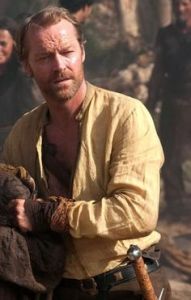Although I haven’t seen many movies this year, what my moviegoing lacked in quantity was made up for in quality. Both early in the year and later on, there were a handful of movies in several genres that were exciting, well-made, funny, and touching. Before diving right in, let’s review my best of the year lists for the last 7 years: 2010, 2011, 2012, 2013, 2014, 2015, and 2016.
Get Out: This movie was, remarkably, a first-time effort by writer-director Jordan Peele, so not only is he extremely funny, but also a prodigiously talented filmmaker. In college I had a professor who said, about the movie Traffic, “Steven Soderbergh could have written 1000 letters to the editor about the failed war on drugs. Instead he made one 2 hour movie”. I always remember this quote when I think of how the best movies treat serious social issues in fresh, original, and thought-provoking ways. “Get Out” is one of those movies. It is a terrifying, unpredictable thriller that illustrates the white fetish for and disregard of black bodies. A damning indictment of benign racism.
Blade Runner 2049: “Blade Runner 2049” blew me away with one of the most visually appealing, thoroughly original cinematic worlds of any recent movie I can recall. The reflection of shimmering water in the villain’s hideout; the gloomy, rainy streets of Los Angeles, reminiscent of the original 1982 movie; the post-apocalyptic wasteland of an empty Las Vegas: all of these elements came together to create a future where artificial intelligence, environmental degradation, and urban isolation are the norm. Into this universe steps my perennial favorite Ryan Gosling, who is perfectly cast as Officer K. Who’s the robot? Who’s the human? It’s all a blur in this dystopia.
The Florida Project: Any good movie stays with you for days afterwards, but wow, this movie alternately left me mesmerized and haunted. I have always noticed that children in both TV and movies aren’t portrayed like real, everyday kids, but rather as precocious automatons. “The Florida Project” is that rare movie that gets childhood right- the wonder, the delight, the awareness of boundaries between kid world and grown-up world. But this movie is so much more. During its second act, we see just how important little Moonee is to her desperate mother. And we see the effect of instability on a child’s life. It’s heartbreaking and beautiful.
Lady Bird: Like “The Florida Project”, “Lady Bird” focuses on a mother-daughter relationship, and how that relationship affects a young girl and her sense of self. But unlike that film, this one shows how a mother’s love can serve as her daughter’s anchor. Taking place during the title character’s senior year of high school, we witness the coming of age of a teenaged girl who is at once unremarkable in her yearning and rebellion and remarkable in her individuality (just take her self-given moniker). This movie felt very personal for me: Lady Bird’s relationship with her mother, her ambition far exceeding her talents, her flair for drama, her selfishness but also her tendency to do the right thing in the end. One quibble: the use of Alanis Morrissette, whose popularity peaked at least 7 years before this film’s 2002-2003 setting.
Honorable Mentions:
Everybody Loves Somebody/Treintona, Soltera y Fantástica These two movies get honorable mentions NOT because they are artistic achievements like the four previous films. They are simply noteworthy this year because they tell stories about young Mexican women living their lives and looking for love. It’s the kind of movie Hollywood just got around to making about 10 years ago, when they realized there are many successful, attractive women in their 30’s who search for love but have concerns beyond dating. So, although these films are predictable and “cursi” (sappy in Spanish), they are still breaking new ground for Mexican movies, so they were still a real pleasure to watch. Also, “Everybody Loves Somebody” featured Jorge María Yazpik, which doesn’t hurt.













